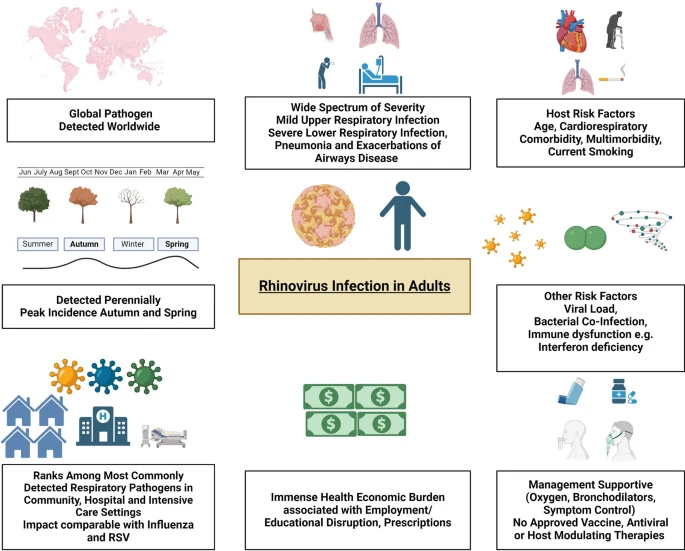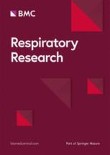Morelli, T., Freeman, A., Staples, K.J. et al. Respir Res 26, 120 (2025). https://doi.org/10.1186/s12931-025-03178-w
Abstract
Background
 |
| Impact of rhinovirus infection in adults |
Main body
HRV is characterised by its extensive genetic diversity, comprising three species and more than 170 genotypes. This diversity and substantial number of concurrently circulating strains allows HRVs to frequently escape the adaptive immune system and poses formidable challenges for the development of effective vaccines and antiviral therapies. There is currently a lack of specific treatments. Historically, HRV has been associated with self-limiting upper respiratory infection. However, there is now extensive evidence highlighting its significant role in severe lower respiratory disease in adults, including exacerbations of chronic airway diseases, such as asthma and chronic obstructive pulmonary disease (COPD), as well as pneumonia. These severe manifestations can occur even in immunocompetent individuals, broadening the clinical impact of this ubiquitous virus. Consequently, the burden of rhinovirus infections extends across various healthcare settings, from primary care to general hospital wards and intensive care units. The impact of HRV in adults, in terms of morbidity and healthcare utilisation, rivals that of the other major respiratory viruses, including influenza and respiratory syncytial virus. Recognition of this substantial burden underscores the critical need for novel treatment strategies and effective management protocols to mitigate the impact of HRV infections on public health.
Conclusion
This review examines the epidemiology, clinical manifestations, and risk factors associated with severe HRV infection in adults. By drawing on contemporary literature, we aim to provide a comprehensive overview of the virus’s significant health implications. Understanding the scope of this impact is essential for developing new, targeted interventions and improving patient outcomes in the face of this persistent and adaptable pathogen.

No comments:
Post a Comment